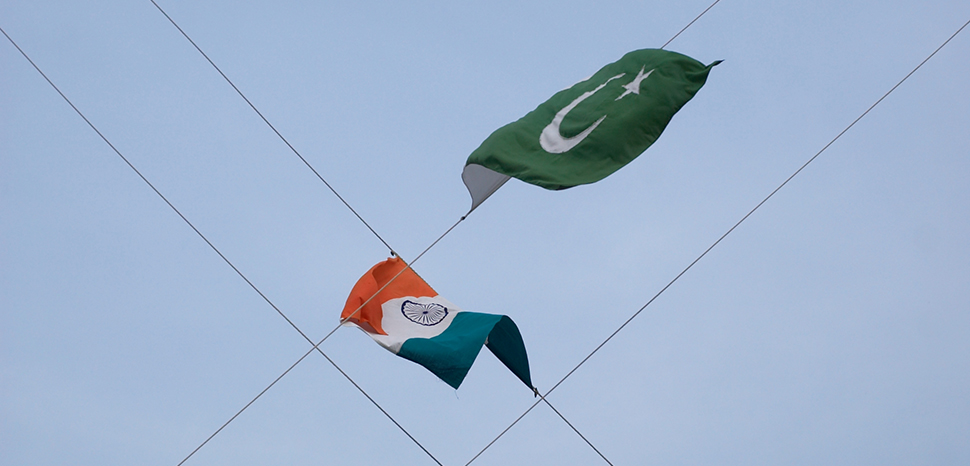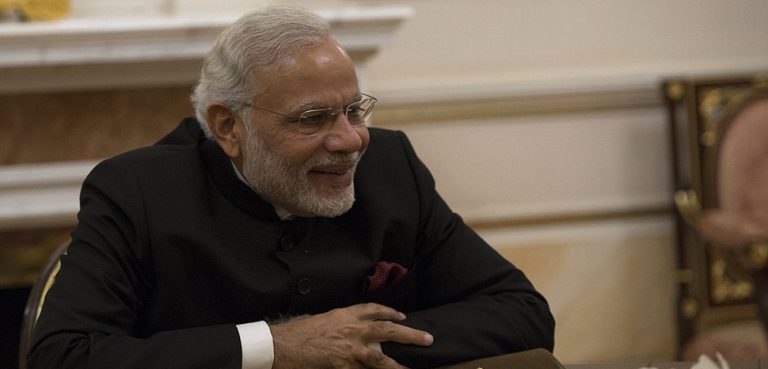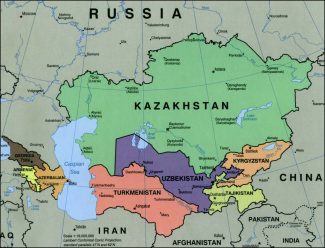One of the most wanted terrorists in India, Farhatullah Ghori has released a series of videos to instigate terrorist attacks in the country. Interestingly, Ghori who is believed to be in Pakistan and was long forgotten by the Indian intelligence agencies, has suddenly come out of the hiding to start a new campaign, resurrecting the Ghazwa-e-Hind, and surprising everyone at a time when Pakistan is being closely watched for its actions on terrorist groups. What is significant is the timing of his resurrection, which coincides with events directly deciding the fate of Pakistan in the international arena. Equally important is the probable security threats which may occur in India as a fallout of these campaigns.
Ghazwa-e-Hind resurrected
“Make Hijrah for Allah, Hijrah to Assam, Hijrah to Kashmir” appeals a sermonic voice purportedly belonging to an individual named “Ustad” in a 1:45 video clip. “Ustad” is otherwise known by his nom de guerre Abu Sufiyan. He is also known by his real name, Farhatullah Ghori, among counter-terrorism experts in India. He is one of the most wanted terrorists with direct links to top leadership of Pakistan based terrorist group Lashkar E Toiba (LeT) and Harkat ul Jihadi al Islami (HUJI) in the 2000s. Considered to be one of the masterminds of the Aksardham Temple attack in Gujarat (2002) and a suicide attack on a Special Task Force camp at Hyderabad (2005), he has evaded arrest ever since. Indian authorities have been chasing this individual, an elusive ghost, despite a Red Corner Notice. Evidence suggests that Ghori was initially in Saudi Arabia but may have moved into Pakistan now.
Ghori has released at least 10 videos since March 2022, the latest coming at the end of June 2022. These videos could not be independently verified, but a report from The Print, indicates that they are most likely made by Ghori or at his behest. “Commence preparations for Jihad” demands Ghori to the Islamic community in a video series titled Ghazwa Series. Ghori’s videos touches upon contemporary issues involving Islamic community in India. While one video talks about 2008 Ahmedabad blast case convictions in February 2022, in which 38 terrorists were sentenced to death for their role, others touch upon the blasphemy issue involving Nupur Sharma, the Citizenship Amendment Act (CAA), the National Registry for Citizens (NRC), etc., This is not the first time such a clarion call for Ghazwa-e-Hind (the prophesied final battle against India) has been made. The Islamic State and Al Qaeda in Indian Subcontinent (AQIS) had made similar calls earlier, highlighted by Geopolitical Monitor. Nonetheless, this is the first time, an individual terrorist sans organizational backing, has made such a call. Understandably, Ghori brings up contemporary issues perceived to be against the Islamic community in India, possibly to ignite their passion and push them in the path of jihad. This sudden rise from the deep slumber and his clarion call for Ghazwa-e-Hind is interesting and intriguing. Except for a brief reference in a terror case in Karnataka in 2013, Ghori has remained in hibernation for almost 17 years since 2005 till his current message in March 2022. This unexpected message from Ghori appears to benefit Pakistan and create fallout that may affect India.
Pakistan’s plausible deniability
For Pakistan, any alternative to terrorist groups that allows it to keep India engaged in an asymmetric war is a blessing in disguise. Pakistan is under immense international pressure to clamp down on terrorist groups and its leaders operating from Pakistan. The Financial Action Task Force (FATF) brought Pakistan under the “Grey List” in 2018 for failing to take action on terrorist groups and their finances. Pakistan has since been retained in the Grey List by the FATF, at times threatening Pakistan with elevation to the “Black List” and subsequent sanctions which would throw an already economically weakened Pakistan into an economic and social chaos. Fearing the eventuality, Pakistan has shown some progress, albeit superficial, by arresting and convicting leaders of terrorist groups such as Lashkar E Toiba (LeT) and Jaish E Mohammed (JEM). Terrorist leaders Hafiz Saeed, Zaki ur Rehman Lakhvi and Abdul Rehman Makki have been convicted for their role in financing terrorism. But more recently, in a desperation to escape the Grey List, Pakistan appears have done the unthinkable: convicted an individual named Sajid Mir in May 2022, someone who was otherwise declared dead in 2021. Mir, one of most wanted terrorists for his role in the Mumbai terrorist attacks (2008) which killed 160 people, was arrested and convicted in May 2022, despite some media claims that he died in 2021, citing Pakistani authorities.
Such a Pakistani Volte-face was on expected lines considering the precarious situation the government finds itself in. As a result, FATF has finally consented to an onsite verification in Oct 2022 to delist Pakistan from the “jurisdiction under increased monitoring” (the ‘Grey List’). Given the unenviable position Pakistan is in, it would be highly risky and foolish to deploy its traditional terrorist groups such as LeT and JeM against India. Any risk of exposure will sabotage the efforts which Pakistan undertook to assuage the FATF. Against this backdrop, activating “Indianized” versions of terror modules, such as the ones which can be operated by individuals like Ghori, is a viable alternative for Pakistan to keep the jihadi flames burning against India. Already some of the groups operating in Jammu & Kashmir have shed their Pakistani color and are trying to project themselves as indigenous ones, claiming to “wage revolutionary war” against an occupying force. A similar template appears to have been used by Pakistan in using Indian citizens, possibly in order to claim plausible deniability amid any future terrorist event against India.
India’s challenge
Firstly, the character of the struggle of these terrorist groups, especially in South India, appears to gradually project more traditional Salafi ideas in order to justify their campaign. The current campaign also appears to incorporate the classic binary concept using the “us vs them” (Islam vs Kufr) analogy. Groups operating in Jammu & Kashmir along with Islamic State-linked modules have been using these Salafi ideas such as Jihad, Tawheed (oneness of Allah), Hijrah (religious migration), and Takfir (excommunication of Muslim deviants) in recent years. Ostensibly, it is the first time that such a campaign has been started outside the Jammu & Kashmir theatre. Ghori attempts to obligate jihad as a religious and legal duly of every Muslim. “Jihad is the forgotten obligation” pronounces Ghori, echoing the idea that Jihad is the legal obligation of every pious Muslim in India. This interpretation was first expounded by 14th century scholar Abu by Zakaryya Dimashqi al-Dumyati, who authored The Book of Jihad. More recently, this concept of Jihad as a legal obligation was applied on the field by Al Qaeda ideologue Abdullah Azzam who emphasized that jihad is a legal obligation (fard al-ayn) of every Muslim. As did others such as Anwar Al Awlaki (Al Qaeda in Arabian Peninsula) and Zahran Hashim (Islamic State in Sri Lanka). Drawing parallels, the same template is now being juxtaposed using religious interpretation on various contentious and contemporary issues troubling the Islamic community in India.
Secondly, this latest call may possibly create a new security threat in India – leaderless Jihad, which has not been witnessed before. In a 6:45 video entitled “Important Message on Blasphemy in India – Defend Your Prophet,” Ghori has carefully but intentionally constructed phrases such as “sharpen your knife, O Mujahid, strike their knecks (sic)”. Ghori has attempted to instigate youngsters to mount attacks on civilians and other soft targets which is a key feature of leaderless jihad. He appeals “Prepare O Mujahid and carry out martyrdom attacks,” which does not attribute membership to any organization but appeals to the Islamic community to perform Hijrah and jihad invoking historical instances of Prophet’s companions Salim Ibn Umair and Muhammed Ibn Maslama who killed people who offended Prophet Mohammed. Ghori claims that these revenge attacks happened earlier and will happen now as well citing Charlie Hebdo attacks where the attackers are believed to have shouted “we have avenged the Prophet” during the attacks. He even refers to the Garland Texas attacks on a cartoon competition of the Prophet Mohammed. Both these attacks were carried out by individuals to avenge cartoon depictions of Prophet Mohammed. Additionally, Ghori has used images of Kamlesh Tiwari, a right-wing activist who was killed for his derogatory comments on the Prophet, thus equating local attacks with those outside India for blasphemy. By citing instances of individuals or loosely held groups carrying out revenge attacks globally and in India, Ghori appears to be instigating lone wolf attacks or leaderless jihad in India. Ominous signs are already evident on the ground. Just a week after the video was released, two men beheaded an individual who supported Nupur Sharma for her blasphemous comments regarding Prophet Mohammed. In a classic Islamic State-style execution, the accused Riaz Akhtari and Gos Mohammad, filmed the murder and circulated it on social media. However, there is no evidence yet to suggest that the killers were inspired by these videos from Ghori.
Thirdly, there are at least 36 individuals who are listed under the provisions of Unlawful Activities (Prevention) Act, 1967 by the Indian government as hardcore terrorists. All of these either belong to LeT, JeM or Khalistani groups which have links to Pakistan. Apart from these, some of the Indians who have been involved in acts of terrorism are believed to be hiding in Saudi Arabia and Pakistan under Pakistani protection. Terrorists like Abu Hamsa (aka Abu Bari), Andhra Pradesh, and Abu Bakar Siddiqui are senior terrorist leaders with strong LeT links. It is widely believed among Indian intelligence agencies that both these along with Ghori are tasked with setting up modules in South India. In the past, multiple attempts were made to create cells in South India. Given the above, there may be a new recruitment wave conducted by these operatives, who may be activated by Pakistan till such time it wriggles out of the FATF quagmire.
Conclusion
To summarize, the appeal for Ghazwa-e-Hind appears to be an effort to revive terrorism in India outside Jammu & Kashmir by Pakistan-sponsored groups. Such appeals are common among groups in Jammu & Kashmir. On one hand, Pakistan under pressure from the international community, is likely to gain from the fallout temporarily. On the other hand, the Indian security planners may face new challenges such as increased extremist violence and leaderless jihad. While a reprieve for Pakistan in the FATF may see sudden spurt in jihadist violence in India by terrorist groups, conversely any retention in the “Grey List” may raise the likelihood of new lone wolf attacks in India.
The views expressed in this article belong to the authors alone and do not necessarily reflect those of Geopoliticalmonitor.com




